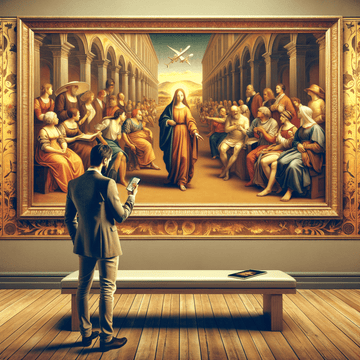"From Realism to Abstract: A Historical Journey Through Western Art Styles" | Metal Poster Art
Oct 17, 2024

Introduction
Over centuries, Western art has undergone fascinating transformations. It started with adhering strictly to reality and evolved progressively into abstractness. Today, we'll embark on a fascinating journey through this evolution, beginning with Realism and ending in Abstract Expressionism.
Realism (Late 1840s to the Late 19th Century)

Realism, as its name suggests, was about painting life as it actually is, with all its grit, hardship, and beauty. French artists like Gustave Courbet and Jean-François Millet pioneered the movement, capturing everyday scenes, landscapes, and even the urban working class's conditions.
Impressionism (1865 to 1885)

Impressionism sought to capture the fleeting nature of reality. Instead of presenting a polished, realistic portrayal of a subject, artists like Claude Monet and Auguste Renoir aimed to depict a momentary 'impression'. This was often depicted through bright, unmixed colors and short, thick strokes of paint.
Post-Impressionism (1880s to 1900s)

Post-Impressionism extended the Impressionist’s ideas, introducing greater subjectivity and symbolic content. Artists like Vincent van Gogh, Paul Gauguin, and Georges Seurat experimented with color, form, and the very structure of painting, laying the groundwork for modern art.
Expressionism (1905 to 1940s)

In Expressionism, artists like Edvard Munch and Egon Schiele aimed to convey raw, emotive, and subjective experiences - often dark, anguished, or ecstatic. They used exaggerated and distorted imagery to achieve an emotional effect.
Cubism (1907 to 1920s)

In Cubism, artists like Pablo Picasso and Georges Braque dissected objects into geometric shapes and reassembled them from multiple viewpoints. This revolutionary approach shifted the focus from realistic representation to emphasizing the canvas's two-dimensionality.
Abstract Expressionism (1940s to 1950s)

Abstract Expressionism, fueled by artists like Jackson Pollock and Willem de Kooning, moved completely away from depicting reality. Instead, the focus was on spontaneous, automatic, or subconscious creation. It celebrated notions of freedom, individuality, and the exploration of the inner world.
Interested in exploring more art like what we've discussed today? Our collection offers a diverse range of styles, including Rococo and beyond. Feel free to dive into our world of artistic wonders by visiting https://metalposterart.com/collections/rococo. Whether you're looking to admire or to acquire, there's always something captivating waiting for you. We're excited to share our passion for art with you.







